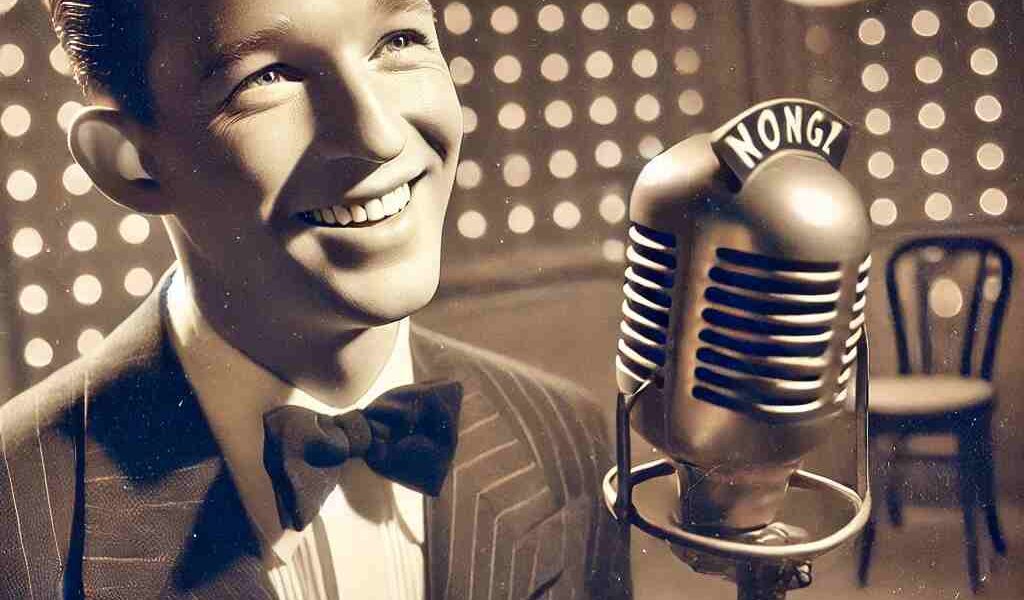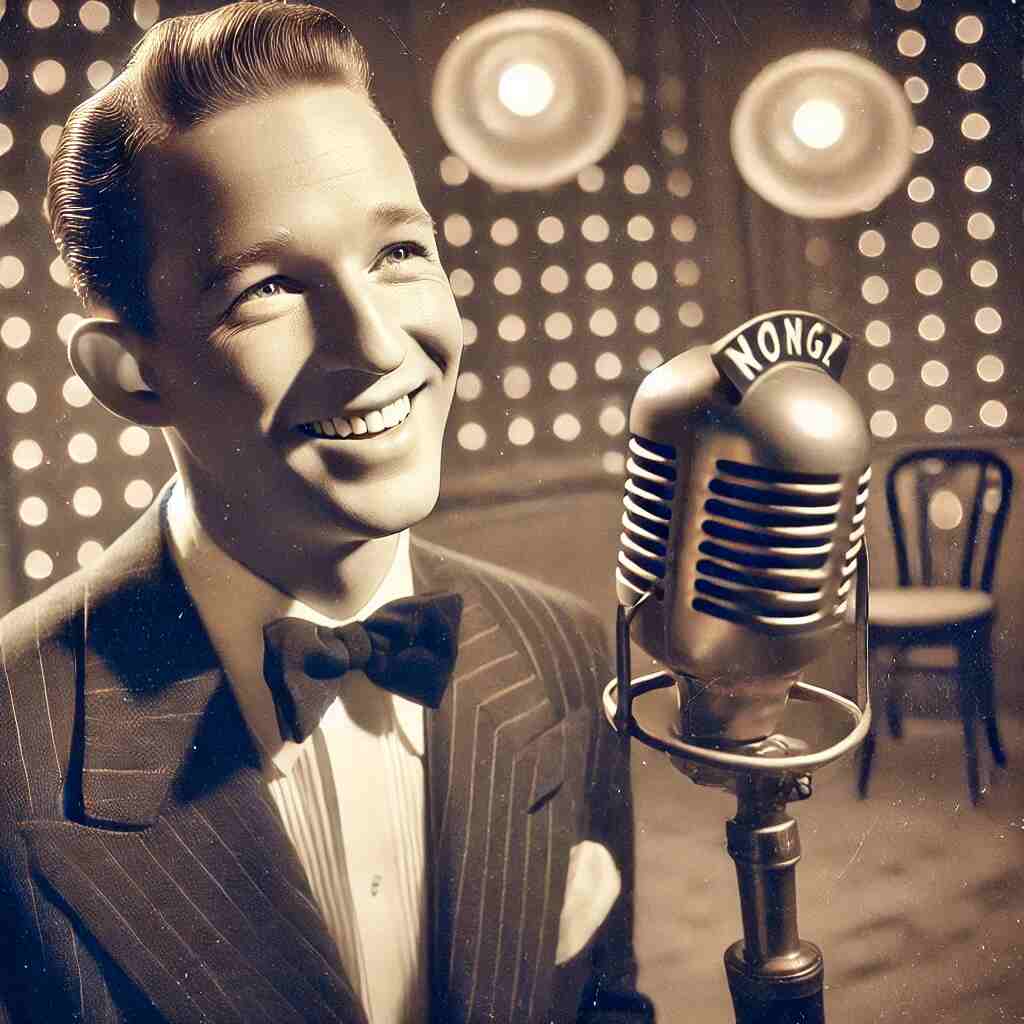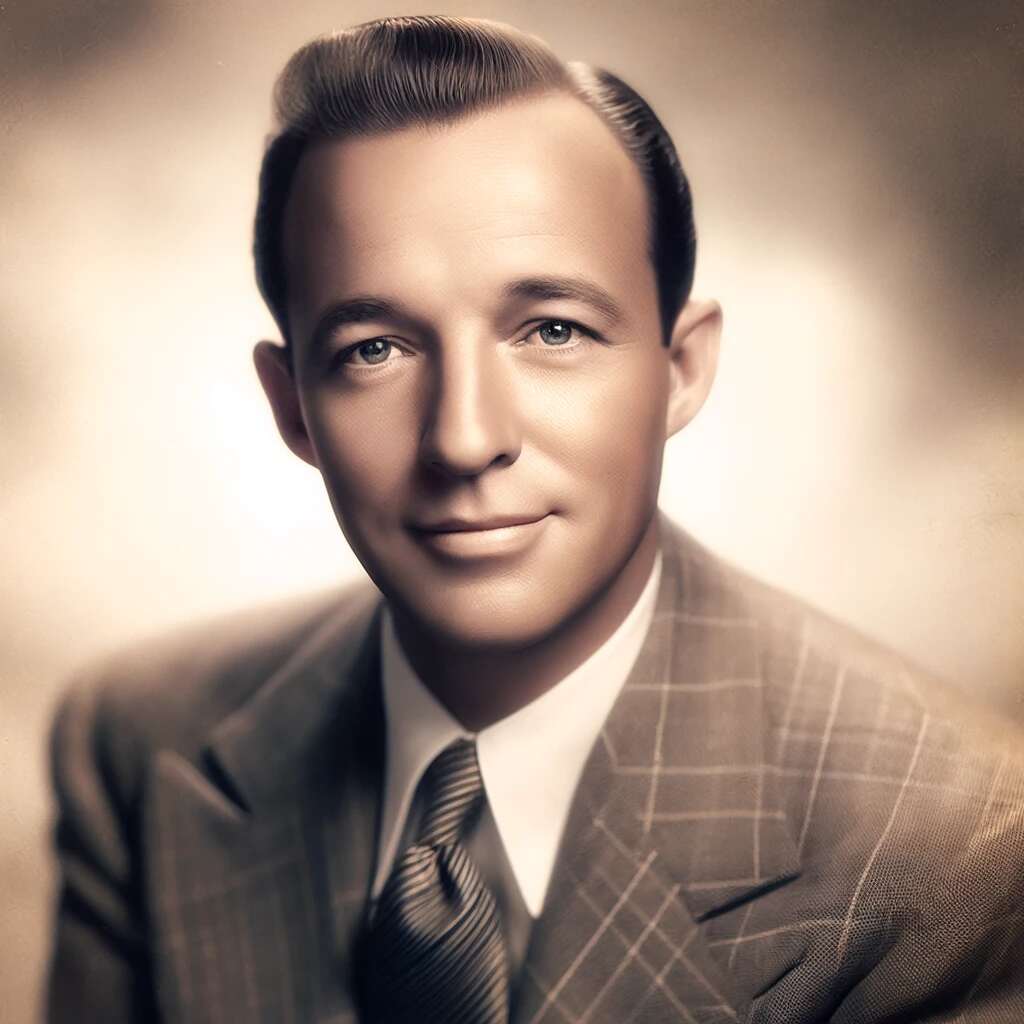
Bing Crosby: The Man Who Defined 20th-Century American Entertainment
Bing Crosby, born Harry Lillis Crosby Jr. on May 3, 1903, in Tacoma, Washington, was a pioneering figure in American entertainment. Over the course of his nearly five-decade career, he became a beloved singer, actor, and cultural icon. His unique voice, charming persona, and innovative approach to music and film left a lasting legacy in the world of entertainment. Crosby’s contributions to radio, records, and film revolutionized the industry, making him one of the most successful and enduring entertainers of the 20th century.
Early Life and Beginnings in Music – Bing Crosby
Bing Crosby grew up in Spokane, Washington, as the fourth of seven children in a devout Irish-Catholic family. He earned the nickname “Bing” after a comic strip character, Bingville Bugle, reflecting his love for humor and wit. Music became an integral part of his life early on, and he began developing his vocal talents in high school and college.
Crosby’s path to stardom began in the 1920s, when he dropped out of Gonzaga University to pursue a career in entertainment. He initially performed as part of a group called The Rhythm Boys, a vocal trio that toured with Paul Whiteman’s band. The group gained popularity, and Crosby’s baritone voice began to attract attention.
Is Blake Shelton Really Leaving The Voice?
Daniel Dubois: The Rising Star in Heavyweight Boxing
What Are the Creators Hiding About Steven Universe’s Final Season?
Tottenham vs Brentford LIVE! Premier League Updates, Match Stream, and Result Today
Why Is Steve Lawson’s Name on Everyone’s Lips Today?

The Rise of a Music Legend
Bing Crosby’s solo career took off in the early 1930s, propelled by the advent of radio and the growing recording industry. His smooth, relaxed singing style set him apart from other vocalists of the time, marking the beginning of the crooner era. Unlike operatic singers who relied on projection, Crosby used the microphone to create an intimate connection with his audience, a technique that revolutionized popular music.
In 1931, Crosby signed with Brunswick Records, and his song “Out of Nowhere” became a huge success. However, it was his 1932 recording of “Please” that solidified his status as a superstar. Throughout the 1930s and 1940s, Bing Crosby dominated the American music charts, with hits like “I’ve Got the World on a String” and “Pennies from Heaven.” His versatility in performing ballads, jazz, and holiday songs made him a household name.
White Christmas: A Timeless Classic
One of Bing Crosby’s most famous contributions to music is the song “White Christmas,” written by Irving Berlin. First recorded in 1942, the song became an instant holiday classic, resonating deeply with American audiences during World War II. Its themes of nostalgia, home, and peace touched the hearts of soldiers and their families. Bing Crosby’s rendition remains one of the best-selling singles of all time, and it has been covered by countless artists.
Crosby’s association with Christmas music extended beyond “White Christmas.” His holiday-themed radio shows and albums, including Merry Christmas (1945), cemented his place as the voice of Christmas for generations. Even today, Crosby’s music continues to be a staple during the holiday season, evoking feelings of warmth and comfort.
Acting Career and Hollywood Stardom
Bing Crosby was not just a successful singer but also a major film star. His acting career took off in the early 1930s, as Hollywood studios recognized his charisma and appeal. Crosby made his film debut in The King of Jazz (1930) but gained widespread recognition with College Humor (1933). His easygoing, likable on-screen persona quickly made him a favorite among audiences.
Crosby became known for his roles in musical comedies and romantic films. His collaborations with director Leo McCarey and actor Bob Hope in the “Road to…” series were particularly popular. These lighthearted adventure comedies, including Road to Singapore (1940), Road to Morocco (1942), and Road to Utopia (1946), showcased Crosby’s comedic timing and undeniable chemistry with Hope. The duo became one of Hollywood’s most iconic comedy pairs.
Academy Award-Winning Performance in Going My Way

One of the highlights of Crosby’s acting career came in 1944 when he starred in the film Going My Way. In this heartwarming story, Crosby played Father Chuck O’Malley, a young and progressive Catholic priest who helps an old parish church. The film was a critical and commercial success, and Crosby’s performance earned him the Academy Award for Best Actor. He reprised the role in The Bells of St. Mary’s (1945), which also became a major hit.
Contributions to Technology and Innovation
Bing Crosby was not only a talented performer but also a forward-thinking innovator in the entertainment industry. One of his most significant contributions was his early adoption of magnetic tape recording, a technology that would revolutionize both radio and music production.
In the late 1940s, Crosby became frustrated with the limitations of live radio broadcasting. At the time, most radio shows were broadcast live, with little room for error or creative flexibility. In 1947, Crosby invested in Ampex, a company that developed the first commercially successful tape recorders. This technology allowed him to pre-record his radio shows, edit them for quality, and eliminate mistakes before they aired. As a result, Crosby’s shows became more polished and professional, setting a new standard for the industry.
Crosby’s use of magnetic tape also paved the way for the development of multi-track recording, a technique that would later be used by musicians like Les Paul, The Beatles, and The Beach Boys to create complex, layered soundscapes. His foresight and willingness to invest in new technologies had a lasting impact on the way music and radio were produced.
Bing Crosby and Television
As television became the dominant medium in the 1950s, Crosby transitioned smoothly into the new format. He appeared in a variety of TV specials and hosted his own show, The Bing Crosby Show, which ran from 1964 to 1965. His laid-back style and warm persona translated well to television, where he continued to entertain audiences across the country.
Crosby’s Christmas specials, in particular, became annual traditions for American families. His 1977 Christmas special, which featured a memorable duet with David Bowie, remains one of the most iconic moments in television history. The juxtaposition of Crosby’s traditional crooning style with Bowie’s modern sensibilities made for a unique and unforgettable performance of “The Little Drummer Boy/Peace on Earth.”
Personal Life and Legacy
Bing Crosby’s personal life was filled with both triumphs and challenges. He was married twice, first to Dixie Lee, a singer and actress, from 1930 until her death in 1952, and then to Kathryn Grant in 1957. He had seven children from his two marriages. While Crosby was known for his easygoing public persona, his personal life was more complex. His relationships with his children, particularly his sons from his first marriage, were strained, and some of his children later spoke openly about the difficulties they faced growing up in his household.
Despite these challenges, Crosby remained a beloved figure throughout his life. His influence on popular culture cannot be overstated. He sold over one billion records worldwide, making him one of the best-selling artists of all time. He won multiple Grammy Awards, and his contributions to film were recognized with numerous honors, including a star on the Hollywood Walk of Fame.
Cultural Impact
Bing Crosby’s impact on American culture extends far beyond his music and films. He helped define the role of the modern pop singer, paving the way for artists like Frank Sinatra, Elvis Presley, and even modern-day crooners like Michael Bublé. His smooth, intimate singing style became the blueprint for vocalists in the mid-20th century, and his use of technology set new standards for recording and broadcasting.
Crosby’s influence also extended to jazz, as he collaborated with some of the greatest jazz musicians of his time, including Louis Armstrong and Duke Ellington. His work helped bridge the gap between popular music and jazz, making jazz more accessible to mainstream audiences.
Moreover, Bing Crosby’s contributions to holiday music continue to be a significant part of his legacy. His Christmas albums and annual specials helped create the modern concept of holiday entertainment, where music, television, and family traditions intertwine.
Conclusion
Bing Crosby was a true pioneer in the world of entertainment. His contributions to music, film, radio, and television reshaped American culture and left an indelible mark on the industry. From his timeless recordings to his Oscar-winning performances, Crosby’s legacy continues to inspire generations of artists and entertainers. He will forever be remembered as one of the most influential and beloved figures in the history of popular entertainment.



